Around mid-December, a big private tourist estate in Ile-de-France (region of France) launched an email campaign to ask its customers for help, in the wake of the disastrous year that had been 2020. Options offered by the company were the purchase of visit tickets, that could be used during the holiday season or later, or donations. However, there was no online sale of their products even though the estate in question has two nice shops on site…one of many examples that shows the major issues faced by organisation these days.
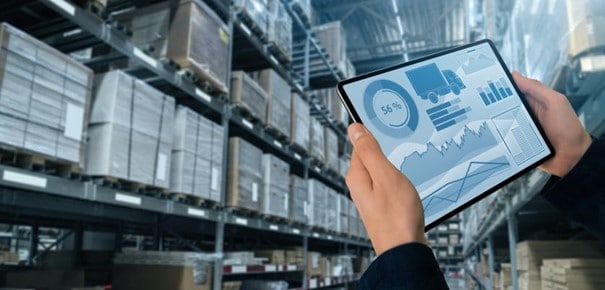
Yet, at the first signs of lockdown, we all saw businesses starting to organise themselves in order to practice remote selling and provide home delivery services: from market-gardeners to major brands, e-commerce mushroomed everywhere, in one form or another.
In the food service industry too, even though the dark kitchen phenomenon had already been spotted in 2019, the e-commerce/home delivery pairing developed further to the point of threatening to permanently transform the food service market (i.e. as soon as a sustainable profit distribution model is agreed upon by all involved players as, to date and according to some restaurant owners, some delivery platforms’ share of the pie is way too big).
If we had to make one prediction in our digital field for 2021, it would thus certainly be that the dominant trend will probably be a further development of the trend outlined in Marc Andreessen’ famous article, “Why software is eating the world“, published in August 2011 in the Wall Street Journal.
Indeed, since the article’s publication, the phenomenon has not only persisted, but been given a boost, with the number of business processes depending on IT to function or be efficient ever increasing.
Development n°1: hyper-automation
In 2020, hyper-automation became a very fashionable term to group all software solutions that automate recurrent activities, such as bots, RPA (Robotic Process Automation) and real-time integration platforms (with an intensification of the market’s appetite and consolidation as from 2018). GARTNER even predicts that by 2024, over 70% of the world’s big companies will have launched almost 70 different automation projects simultaneously! (Source: Gartner webinar held on 30 November 2020).
Even though some activity sectors are definitely more open to task digitalisation and automation (namely those in which administrative and recurrent tasks are the most abundant) than others, which are structurally reliant on equipment and human labour, such as agriculture (see the largest circle in our classification attempt below), IT, and more generally software solutions, has been gaining ground all the same everywhere and in a number of ways:
- Computer-assisted recurrent tasks (examples: greenhouse farming or container farming managed using a computer, crop and soil monitoring with automatic watering)
- Man helped by several IT tools (examples: digital twins, augmented reality)
- Technology revolutionizing techniques (example: 3D printing)
- In all activity sectors, there are recurrent administrative tasks that can be automated (examples: invoice recording, data replication from a modern IS to another older one)
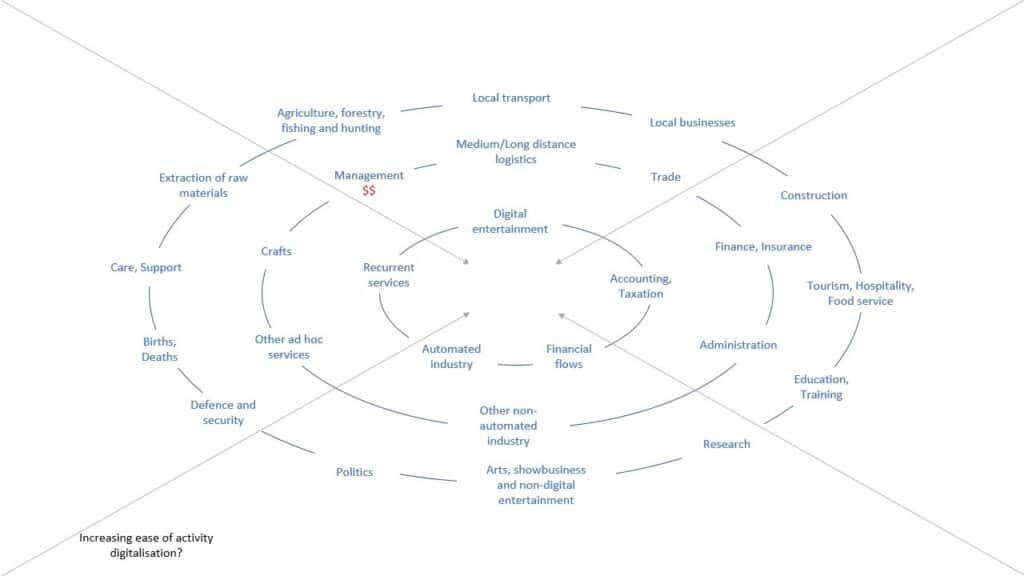
Development n°2: AI embedded in business processes and dashboards
Sometimes only regarded as a field in which algorithms are built on an ad hoc basis, AI also exists in the form of third-party services. We are referring here to the AI-as-a-service already mentioned by DELOITTE firm in its 2019 report on digital trends. For example: data extraction when reading a document, and conversational robots (chatbots)…
More and more, AI is also being integrated into software packages as a user aid: dashboard summary, product or action recommendation in CRM, image customisation assistance, customisation on e-commerce sites, fraud risk identification, computer network breach identification, etc.
The possibilities seem endless and software publishers are all developing such features. Standard cognitive services (artificial intelligence and machine learning) seemingly providing companies with a way to quickly test, learn and reap first benefits such as, for example, dynamic customization of some e-commerce site components.
Development n°3: Responsive CX
In terms of Customer experience, we think that a new trend, at the crossroads between hyper customisation and hyper automation, has emerged and could be termed: responsive customer experience.
For a few years now, we have been offering responsive-design digital formats that automatically adapt to users’ screen size. Today, the coupling of marketing solutions and Digital Asset Management (DAM) has also made it possible to automatically format videos according to user device and bandwidth, as are messages and images according to customer path and choices (see examples provided by Wedia).
Even video content can be dynamically customised based on customer type and needs (see the video content dynamic management of Sundaysky, a company specialised in video content management and distribution).
In short, in spite of the challenges ahead for visitor tracking third-party cookies, Customer experience is bound to automatically adapt to customers from start to finish: to their context of use, preferences, actions…based on marketing content and scenarios deigned upstream.
Striking a balance between digitalization and the human touch
Of course, the aim is not to digitalise everything and lose all human contact with customers. The challenge lies in striking the right balance between non-physical digitalisation, the human touch and the tangible (contact centres, customer visits, telephone follow-ups, paper-based mail…) for maximum efficiency. This digital/human-tangible configuration is of strategic importance to provide Customer experiences that will help you occupy a specific position on the market that is in keeping with your corporate image.
Defining one’s own configuration is synonymous to defining one’s own value proposition, a bit like a hotel chain deciding to focus on bedding, bathrooms and breakfasts whilst simplifying as much as possible greetings at the reception desk.
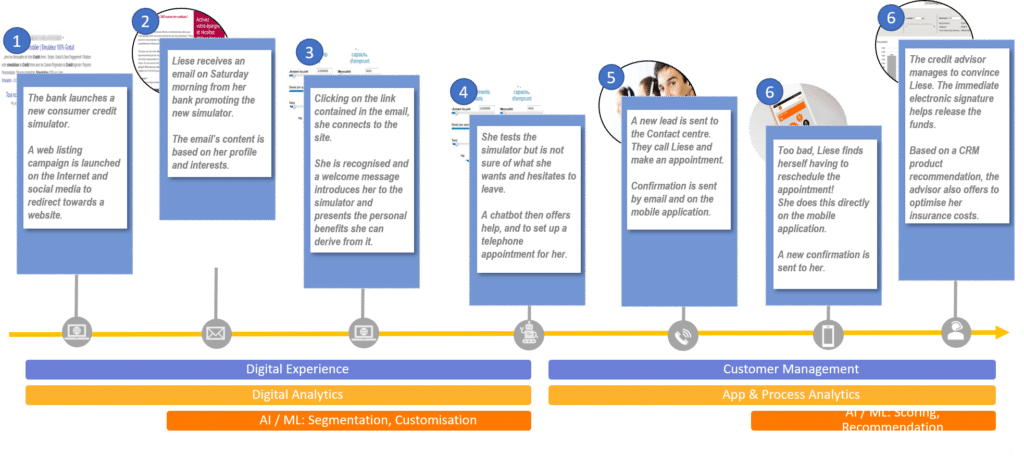
Development n°4: fiercer international competition among service providers
For centuries, wealth accumulation and capitalism have run namely on the exploitation of finite and localised resources (farm products, labour, gold and minerals, coal, oil…), the protection/opening-up of markets according to countries’ relative power and transport systems.
“The 18th century is (…) the century in which capitalism establishes itself as a system with its own production mode. But it does so on the basis of the accumulation of wealth that continues to be generated by two main sources:
- Traditional extortion in the form of surplus labour in the agricultural sector
- Colonial overexploitation in various forms
Due to the development of (domestic and global) markets and the expansion of trade, increasing production becomes a necessity: first, in traditional forms (manufacturing, home-based work), then, with techniques and within the context of factories running on energy sources.” (Source: Histoire du capitalisme de 1500 à nos jours, Michel BRAUD).
Many centuries and industrial revolutions later, thanks to digitalisation, we can now create high added-value offerings by combining tools, software and services (which can be remotely provided). These services, mostly flexible due to the Cloud’s capabilities, are:
- A means of increasing production capacity (robotisation, automation, productivity…) other than by surplus labour
- Accessible from virtually anywhere in SaaS mode or through downloads (today, there is no need to control a region to have access to it if communication networks are open)
- The result of a whole world teeming with new ideas
Even more than raw materials, labour and energy, this new type of knowledge and work is easily shared and exchanged at the very heart of what is an extremely competitive global market since, at the end of the day, barriers to entry are quite low.
Outsourcing accounting, contact centres, monitoring services… has become quite common. In the same way, each new digitalised activity can then be (much more) easily outsourced, remotely managed and optimised (examples: machine tools monitoring, cybersecurity, production line quality analysis, shelf stock optimisation in hospitals, deliveries, damage assessment, container farming…).
In other words, in a global market context, which is extremely open and almost entirely free of communication and transport constraints, companies are able to significantly change their business models. From design to manufacturing, distribution, sale and customer service, the whole value chain can be broken down and then outsourced or re-imagined in a way that requires less human intervention.
We think that 2021 will see a further globalisation of value chains, as it will help survive the crisis and post-crisis periods, and is now accessible to numerous organisations that have recently made an effort to digitalise some of their activities (examples: from a locally managed e-commerce site to a remotely outsourced service, from physical monitoring to the recording of road traffic violations using surveillance cameras (video-verbalization)).
Global competition will thus be stronger amongst service providers and any service provider unable to provide services backed by exclusive data or tools will find itself facing increasingly stiff competition.
Development n°5: digitalisation must be followed by optimum leverage
Let us take the example of Customer Relationship-dedicated tools: CRM. According to studies, for more than 13 years now, 30 to 60% of CRM projects have been failing to meet their objectives, with a satisfaction rate that goes back up to 60% after 2 or 5 years, providing continuous effort is made with regards to the platform (fixes and upgrades) and training (users and managers). In the meantime, SaaS CRM platforms continue to evolve at a rapid pace, coming up each time with new features and opportunities to improve internal processes. What becomes essential then is knowing how to leverage them whilst retaining platform agility for future developments.
However, with shrinking investment budgets and increasing subscriptions to SaaS solutions, organisations are considering that fact that they may no longer need in-house technical skills that constantly need to be updated or renewed.
By delegating to their integration partner more activities, with performance and quality indicators, business teams can free up some time whilst capitalising on their investments.
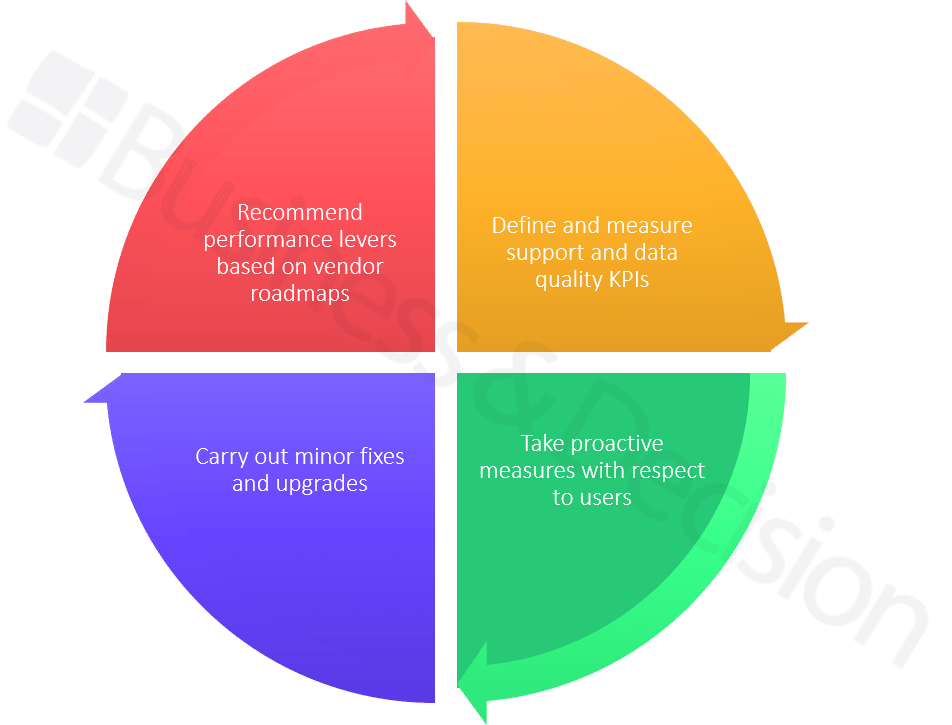
But that is far from all! Once the project’s initial objectives covered, additional investments to be made are minor compared to the potential benefit that the company could still derive from them. For example, in the world of B2B, after having set up a customer repository and customer relationship monitoring based on appointments, tasks, opportunities and a few operational dashboards, there are still many interesting things (and often technically fast) to do with respect to Customer portfolio analysis and management, business strategy, key account management…
However, since CRM vendors are integrating AI more and more into their tools to provide automatic scores, reminders and recommendations, we should ensure that the data needed by these algorithms is sufficient and of high quality: indeed, when it comes to machine learning (unlike scoring based on predefined rules), recommendation relevance is determined by the data available upstream.
We have taken as example CRM but we could also have taken that of chatbots that are constantly learning, or being extended to new use cases on the one hand, and enhanced with new technical features on the other.
The increasing digitalisation of companies involves several stages. After initial implementation, you need to monitor to ensure success and then make some additional minor investments to make further progress. To meet these objectives, companies will be increasingly turning to those Consulting services that systematically combine technical-functional expertise with business expertise (examples: expertise with respect to a vendor’s CRM platform and expertise in marketing and sales, expertise in IOT 5G devices and expertise in industrial maintenance or logistics). To be continued…













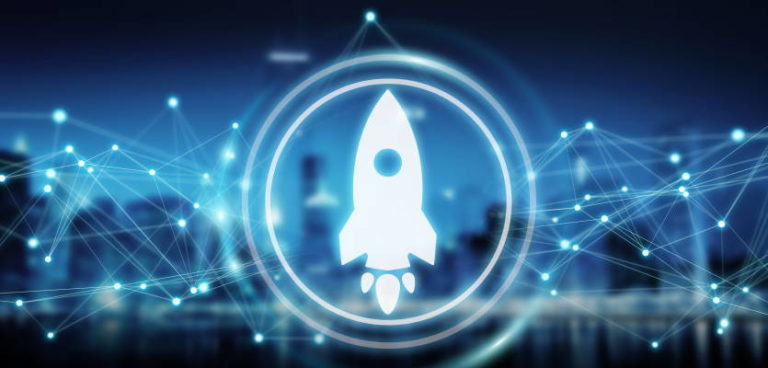


Your email address is only used by Business & Decision, the controller, to process your request and to send any Business & Decision communication related to your request only. Learn more about managing your data and your rights.